Search results for "2010/02/let-us-eat-cake"
Tiia Aarnipuu: Jonkun on uskallettava katsoa. Animalian puoli vuosisataa [Someone’s got to dare to look. Half a century of Animalia]
28 July 2011 | Mini reviews, Reviews
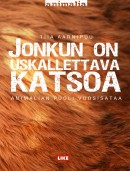 Jonkun on uskallettava katsoa. Animalian puoli vuosisataa
Jonkun on uskallettava katsoa. Animalian puoli vuosisataa
[Someone’s got to dare to look. Half a century of Animalia]
Helsinki: Like Kustannus, 2011. 209 p., ill.
ISBN 978-952-01-0582-2
€ 33, paperback
This book has been published to mark the 50th anniversary of Animalia, the Federation for the Protection of Animals. The public image of the organisation has varied between one of a conservative club of ladies and gentlemen and that of a radical terrorist group. Animalia was founded in 1961, inspired by Johan Börtz, a Swede who gave lectures on the plight of animals used in experiments. Animalia began making visits to inspect animal testing facilities, which were completely unregulated in the early 1960s. Gradually the animal rights movement became more radicalised, somewhat later than in places such as Britain. Animal rights became a subject of wider debate in Finland in the 1980s. In the 1990s, the organisation was falsely linked with attacks made on fur farms by direct-action youth groups. Animalia’s stance has been to renounce vandalism and violence. In February 2010 Animalia launched its largest-ever information campaign, aimed at ridding Finland of fur farms by 2025.
Translated by Ruth Urbom
Konstnärsbröderna von Wrights dagböcker 1–7 [The diaries of the von Wright brothers, Vols. 1–7]
1 April 2010 | Mini reviews, Reviews
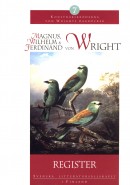 Konstnärsbröderna von Wrights dagböcker 1–7
Konstnärsbröderna von Wrights dagböcker 1–7
[The diaries of the von Wright brothers, Vols. 1–7]
Magnus von Wright: Dagbok [Diary] 1824–1834. 407 p., ill. ISBN 951-583-026-5
Magnus von Wright: Dagbok [Diary] 1835–1840. 470 p., ill. ISBN 951-583-040-0
Magnus von Wright: Dagbok [Diary] 1841–1849. 431 p., ill. ISBN 951-583-047-8
Magnus von Wright: Dagbok [Diary] 1850–1862. 496 p., ill. ISBN 951-583-060-5
Magnus von Wright: Dagbok [Diary] 1863–1868. 493 p., ill. ISBN 951-583-085-0
€ 46 each, hardback
Wilhelm & Ferdinand von Wright: Dagböcker [Diaries] 615 p., ill. ISBN 978-951-583-137-8.
€ 46, hardback
Index: 398 p., ill. ISBN 978-951-583-138-5. € 20, hardback
Helsinki: Svenska Litteratursällskapet i Finland, 1996–2010
Toimittaneet [Ed. by]: Anto Leikola, Juhani Lokki, Torsten Stjernberg, Johan Ulfvens
The three von Wright brothers, who came from a family with nine children in rural north Savo (in eastern Finland), shared a talent for meticulous observation combined with masterful technique and a romantic style. Each of these artists, who were active during the Biedermeier era, was a trailblazer in his own field: Magnus (1805–1868) as a proponent of Finnish national art, Wilhelm (1810–1887) as a wildlife illustrator, and Ferdinand (1822–1906) as a painter of landscapes and birds. Their contribution to Nordic ornithology is considerable. The index volume to the von Wright brothers’ diaries (which were written in Swedish) includes lists of their artworks and details of works held by collections abroad. This series is of significant cultural importance, and it is remarkable for its scientific accuracy. Five volumes consist of Magnus von Wright’s diary entries, which he wrote daily from 1820 up until his death. The sixth volume contains diary entries by the two younger brothers, which provide insights into the everyday life and society of that era, as well as the artists’ working practices and their relationship with nature.
Too much, too soon?
20 January 2012 | This 'n' that
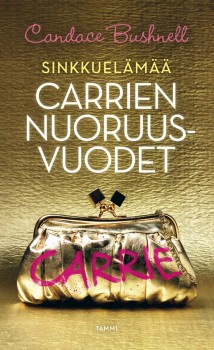 Candace Bushnell’s Summer & the City (about Carrie Bradshaw’s first years in NYC, published last year) is categorised among books for children and young people on the Finnish best-sellers’ list. The Finnish translation occupied the eighth place in December.
Candace Bushnell’s Summer & the City (about Carrie Bradshaw’s first years in NYC, published last year) is categorised among books for children and young people on the Finnish best-sellers’ list. The Finnish translation occupied the eighth place in December.
But hang on, wasn’t this Carrie in the fantastically famous HBO television adaptation of Bushnell’s novel Sex and the City very much in her thirties, as were her three best friends – all with, yes, quite active ‘adult’ sex lives…? In Finland the series had a rather silly title, Sinkkuelämää, ‘Single life’.
Well, of course it would be foolish not to continue the fantasticaly famous money-spinning saga, so Bushnell has gone back in time, first to Carrie’s school years in small-town America in The Carrie Diaries (2010), then to her first years in NYC in Summer & the City (2011) – and HarperCollins has pigeonholed them among its ‘teen books’.
Confusingly, the Finnish titles of these two books also contain the word referring to the television series: Sinkkuelämää – Carrien nuoruusvuodet and Sinkkuelämää – Ensimmäinen kesä New Yorkissa. As the Finnish publisher Tammi has attached TV title to them, the customer assumes these are books for ‘adults’ – as indeed was the original Sex and the City.
This makes one wonder what exactly ‘books for young people’ are. The main characters are teens themselves? If Bushnell goes still further back in time, we shall be reading about naughty Li´l Carrie hitting another toddler on the head with her doll, in a board book.
Jera Hänninen & Jyri Hänninen: Tuhansien aatteiden maa. Ääriajattelua nyky-Suomessa [Land of a thousand ideologies. Extremist thought in contemporary Finland]
11 March 2011 | Mini reviews, Reviews
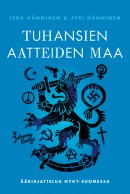 Tuhansien aatteiden maa. Ääriajattelua Nyky-Suomessa
Tuhansien aatteiden maa. Ääriajattelua Nyky-Suomessa
[Land of a thousand ideologies. Extremist thought in contemporary Finland]
Helsinki: Johnny Kniga Kustannus, 2010. 267 p.
ISBN 978-951-0-36072-9
€ 30, paperback
There are a number of extremist ideologies with a foothold in Finland. Even though most such groups are very small, religious and political extremism have experienced growth and do not always remain on the margins. The authors of this book have chosen to include only those ideologies whose efforts are clearly directed against particular groups or that would result in an erosion of democracy if they were to gain some real power. Topics receiving the greatest amount of attention in the media have been immigration and the polarisation within the Finnish Lutheran Church. According to some reports, the Church is being split over the issues of female clergy and homosexuality. This book also covers Finnish-born Islamists who support Sharia law, Communists who distort history and venerate the Soviet Union, honour killings carried out in Finland, and NRA Finland, a hard-line pro-gun lobbying organisation. The authors also discuss how these zealots, having gained more support, have also begun to influence the positions of mainstream political parties.
Translated by Ruth Urbom
Aquatic escapades
12 November 2010 | Reviews

Susanne Ringell. Photo: Anders Larsson
First about the form: the wavy, turquoise cover of Vattnen (‘Waters’), Susanne Ringell’s third collection of short stories, is protected by a layer of waxed paper that looks like a thin film of ice.
Inside the book, water flows everywhere: the twelve stories are set in it or near it, or mimic it in form. The water symbolises a fundamental force, a consolation, but also an elusivity. The characters in the stories exist in a kind of volatile, intermediate state – they are heading for a crisis or are in the moment immediately after one.
Since 1993 Ringell (born 1955) has produced short story collections, poetry, prose poetry, mini-stories and a novel. In them, as in Vattnen (Söderströms, 2010), Ringell’s language is her own: beautiful, robust and fragile, vivid, subtle and at the same time practical. More…
Best foot forward
14 May 2010 | This 'n' that
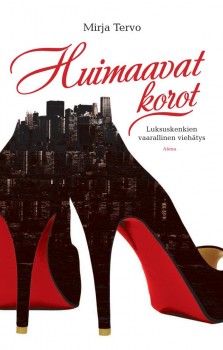 C’est moi. Tribute. Eliza. Muse. Monica. Very Privé, Super Private.
C’est moi. Tribute. Eliza. Muse. Monica. Very Privé, Super Private.
These are names of shoes that women buy in luxury shops on New York’s Fifth Avenue. Six inches or more of heels that cost anything between 500 and 5,000 dollars, make walking torture; but pain is tolerated, as along with the shoes a woman acquires a deeply satisfying feeling of being envied, beautiful and sexy (her toe cleavage has to be clearly visible).
Mirja Tervo (born 1971) is an ethnologist who spent a year and a half selling luxury shoes in Manhattan. Among her fellow sales personnel were a medical doctor, a musician, an actor and a retired baseball pro.
The shoe salon paid no salary, just commission of ten per cent, and the required minimum sale per week was 3,500 dollars. If a sales person failed to sell merchandise worth this sum, he or she was given a loan of 300 dollars, payable immediately when the results improved, and they quickly had to. More…
Itämeren tulevaisuus [The future of the Baltic Sea]
17 February 2011 | Mini reviews, Reviews
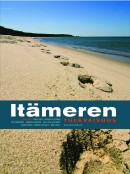 Itämeren tulevaisuus
Itämeren tulevaisuus
[The future of the Baltic Sea]
Contributors: Saara Bäck, Markku Ollikainen, Erik Bonsdorff, Annukka Eriksson, Eeva-Liisa Hallanaro, Sakari Kuikka, Markku Viitasalo, Mari Walls
Helsinki: Gaudeamus, 2010. 350 p., ill.
ISBN 978-952-459-132-6
€ 39, paperback
This publication covers the key environmental issues affecting the Baltic Sea and provides new perspectives on those issues. The Baltic, with its relatively small, shallow dimensions and low salinity, is one of only a few seas in the world that is home to both freshwater and saltwater fish species and inland and marine birds. The Kvarken Archipelago in the Gulf of Bothnia was granted UNESCO World Heritage Site status in 2006. There are some 85 million people living within range of the environmentally sensitive, heavily trafficked Baltic Sea in nine countries around its coastline and its drainage basin. Serious environmental alarm bells began to ring in the 1960s with the realisation that the white-tailed eagle was on the brink of extinction. The socio-political history of the Baltic has had an effect on its protection, since the border between two competing economic systems – communism and capitalism – ran right through it. The articles in this book make it clear that science has identified ways to protect the Baltic Sea, but these research findings are not being put into practice in official decision-making.
Translated by Ruth Urbom
Elina Hirvonen: Kauimpana kuolemasta [Furthest from death]
30 September 2010 | Mini reviews, Reviews
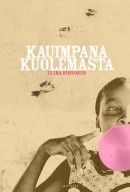 Kauimpana kuolemasta
Kauimpana kuolemasta
[Furthest from death]
Helsinki: Avain, 2010. 240 p.
ISBN 978-952-5524-81-9
€ 30, hardback
Elina Hirvonen (born 1975) came to international attention with her first novel, Että hän muistaisi saman (English translation: When I forgot). With Kauimpana kuolemasta she shows that her success was well deserved: she has both talent and originality, and also courage linked with a sense of form. This book belongs to the genre of Finnish novels set at the interface between two countries, a device that in some hands can become a facile dramaturgical trick for the creation of contrasts. The interweaving of human stories from Finland with stories from Zambia sets all the alarm bells ringing, but the encounter between Paul and Esther, two sad people who lack a secure homeland, vibrates with emotion-charged scenes. Paul is the son of Finnish overseas aid workers, Esther is an outcast from her Zambian village, in flight from one hell to the next. Slowly Paul and Esther are brought together and the reader hovers in uncertainty as to whether their paths will ever cross. The two characters see and experience violence as they journey towards pain, but Elina Hirvonen’s sensual and life-affirming language conveys the realisation that hope is – sometimes – stronger than death.
Funny stuff favoured
13 April 2011 | In the news
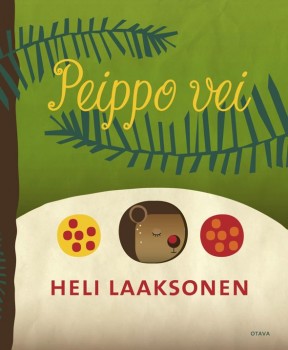 In March the Bookseller’s Association of Finland’s list of the best-selling Finnish fiction was topped – for a change – by a collection of poems. Like all her collections, Heli Laaksonen’s Peippo vei (‘The chaffinch took it’, Otava) is written in a local dialect spoken in south-western Finland.
In March the Bookseller’s Association of Finland’s list of the best-selling Finnish fiction was topped – for a change – by a collection of poems. Like all her collections, Heli Laaksonen’s Peippo vei (‘The chaffinch took it’, Otava) is written in a local dialect spoken in south-western Finland.
Perttti Jarla’s latest comics book, Fingerpori 4 (‘Fingerborg 4’, Arktinen Banaani) was number two – and, demonstrating the Finns’ love of cartoons and comics, another of his titles, Fingerpori book, Fingerpori – Kamppailuni (‘Fingerborg – My fight’) occupied fourth place, following Sofi Oksanen’s Puhdistus (Purge), published in 2008 and still number three on the list. More…
Maarit Knuuttila: Kauha ja kynä. Keittokirjojen kulttuurihistoriaa [The ladle and the pen. The cultural history of the cookbook]
24 September 2010 | Mini reviews, Reviews
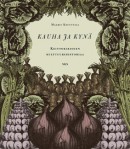 Kauha ja kynä. Keittokirjojen kulttuurihistoriaa
Kauha ja kynä. Keittokirjojen kulttuurihistoriaa
[The ladle and the pen. The cultural history of the cookbook]
Helsinki: SKS (The Finnish Literature Society), 2010. 207 p., ill.
ISBN 978-952-222-187-2
€ 26, hardback
This book by ethnologist Maarit Knuuttila describes the history of European cookbooks, recipes and cooking. Knuuttila familiarises the reader with the earliest documents relating to the preparation of food, which were written by the ancient Greeks and Romans, but of which only a few have been preserved. Instead of haute cuisine the book concentrates on the authors and users of basic Finnish cookery books, and examines how those books reflect the times in which they were written, as well as their significance for women. While the literary high culture of gastronomy has been produced mainly by men, the everyday dishes represented in the basic cookbooks are the work of women. The author discusses the changes in perceptions of the ideal home and health, as well as the ways in which Finnish cookery, housekeeping and food culture have altered during the past hundred years.
Timo Kalevi Forss & Martti Lintunen: Karjala edestakaisin [Karelia back and forth]
3 August 2011 | Mini reviews, Reviews
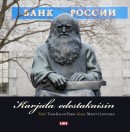 Karjala edestakaisin
Karjala edestakaisin
[Karelia back and forth]
Teksti [Text by]: Timo Kalevi Forss
Kuvat [Photographs by]: Martti Lintunen
Helsinki: Like Kustannus, 2010. 164 p., ill.
ISBN 978-952-01-0504-4
€ 29, paperback
At the end of the Continuation War (1941–44), some 400,000 Karelians were forced to abandon their homes. They were resettled in various parts of Finland, and nowadays around a fifth of Finns have some Karelian heritage. Through interviews with fifteen people living in the modern-day region of Karelia, this book documents the part of Karelia that was ceded to the Soviet Union. The researchers travelled to Vyborg, Sortavala, Priozersk, and the Valaam Monastery. The interviewees include a construction company owner building a house on an old Finnish stone foundation, a rock music club owner from Vyborg and a colonel who served in the counter-terrorism division of the Russian army. The photographs convey the range of buildings in Karelia, from Finnish houses to traditional Karelian homesteads, from mansions of the nouveaux riches to Soviet-era tower blocks. In the idyllic villages around Lake Ladoga, cows graze near small houses; time seems to have been frozen around the turn of the last century. The long sandy beaches of the spa towns on the shores of the Gulf of Finland are now filled with tourists from St Petersburg.
Translated by Ruth Urbom
The Tollander Prize to Ulla-Lena Lundberg
17 February 2011 | In the news
One of the biggest literary prizes in Finland is the Tollander Prize, awarded annually on 5 February, the birthday of he national poet J.L. Runeberg, by Svenska litteratursällskapet i Finland (the Society of Swedish Literature in Finland). The prize is worth €35,000.
The recipient of the 2011 Tollander Prize is Ulla-Lena Lundberg, a versatile writer of novels, short stories, poems and travel essays. ‘She moves freely in different landscapes, times and cultures, finding universality in locality, whether on the island of Kökar in Åland, in Africa or in Siberia’, said the jury.
Written between 1989 and 1995, Lundberg’s fictional trilogy of Leo, Stora världen (‘The big world’) and Allt man kan önska sig (‘Everything one can wish for’), focused on the seafaring history and evolution of shipping in the Finnish Åland islands. Her autobiographical work Sibirien (Siberia’, 1993) has been published in German, Danish and Dutch.
Read the extracts from her latest book, Jägarens leende (‘Smile of the hunter’, 2010), on rock art, reviewed on our pages by Pia Ingström.
Helsinki Book Fair 2011
2 November 2011 | In the news
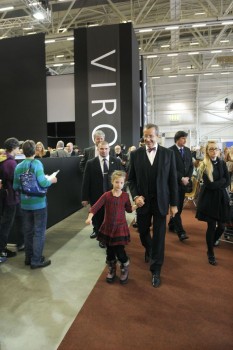
President Toomas Hendrik Ilves at the Book Fair: Viro is Estonia in Finnish. Photo: Kimmo Brandt/The Finnish Fair Corporation
The Helsinki Book Fair, held from 27 to 30 October, attracted more visitors than ever before: 81,000 people came to browse and buy books at the stands of nearly 300 exhibitors and to meet more than a thousand writers and performers at almost 700 events.
The Music Fair, the Wine, Food and Good Living event and the sales exhibition of contemporary art, ArtForum, held at the same time at Helsinki’s Exhibition and Convention Centre, expanded the selection of events and – a significant synergetic advantage, of course – shopping facilities. Twenty-eight per cent of the visitors thought this Book Fair was better than the previous one held in 2010.
According to a poll conducted among three hundred visitors, 21 per cent had read an electronic book while only 6 per cent had an e-book reader of their own. Twenty-five per cent did not believe that e-books will exceed the popularity of printed books, and only three per cent believed that e-books would win the competition.
Estonia was the theme country this time. President Toomas Hendrik Ilves of the Republic of Estonia noted in his speech at the opening ceremony: ‘As we know well from the fate of many of our kindred Finno-Ugric languages, not writing could truly mean a slow national demise. So publish or perish has special meaning here. Without a literary culture, we would simply not exist and we have known this for many generations, since the Finnish and Estonian national epics Kalevala and Kalevipoeg. – During the last decade, more original literature and translations have been published in Estonia than ever before. And we need only access the Internet to glimpse the volume of text that is not printed – it is even larger than the printed corpus. We live in an era of flood, not drought, and thus it is no wonder that as a discerning people, we do not want to keep our ideas and wisdom to ourselves but try to share and distribute them more widely. The idea is not to try to conquer the world but simply, with our own words, to be a full participant in global literary culture, and in the intellectual history and future of humankind.’
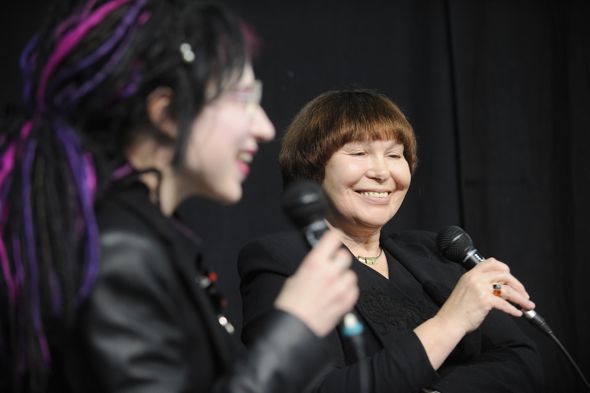
Finland meets Estonia: authors Sofi Oksanen and Viivi Luik in discussion. Photo: Kimmo Brandt/The Finnish Fair Corporation
Jarmo Papinniemi in memoriam 1968–2012
9 October 2012 | In the news

Jarmo Papinniemi
The editor, literary critic and writer Jarmo Papinniemi has died of a sudden illness in Helsinki.
Two days later, the latest edition of Parnasso was published: Papinniemi became editor-in-chief of this august 60-year-old literary magazine in 2005. During his period as editor, the magazine’s readership increased, quite an achievement in the difficult world of periodicals.
Jarmo Papinniemi worked as a literary critic and as a news and arts reporter for Finnish Broadcasting Company from 1998 to 2005. He wrote and directed television documentaries, and was the author of numerous books on literature and music, including Aloittamisen taito (‘The art of beginning’, 2010, with Kaisa Neimala) and Sävelten siivillä (‘On the wings of music’, 2011), a study of the work of the composer Ilkka Kuusisto.
Jarmo was also a member of the Editorial Board of Books from Finland from 2002. He was a quick, industrious and knowledgeable reader and writer whose opinions were well grounded and expressed, and he was interested in an unusually wide range of culture. Cheerful, humorous, a connoisseur of music, Jarmo was a colleague with whom conversations were always enjoyable and thought-provoking; he will be greatly missed by all of us who worked with him.
Sodan haavoittama lapsuus [A childhood scarred by war]
11 August 2011 | Mini reviews, Reviews
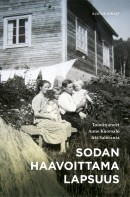 Sodan haavoittama lapsuus
Sodan haavoittama lapsuus
[A childhood scarred by war]
Toimittaneet [Edited by]: Anne Kuorsalo & Iris Saloranta
Helsinki: Gummerus, 2010. 288 p., ill.
ISBN 978-951-20-8107-3
€ 34, hardback
Around 1.5 million Finns were children during the Winter and Continuation Wars of 1939–1944. Three hundred children are estimated to have been killed by bombs, and between 55,000 and 80,000 were orphaned by the war. Many more deaths were caused by diseases such as tuberculosis, polio and cerebral meningitis. Some children lived fairly secure lives on farms with their own families or with relatives; some were sent to live with foster families in Sweden; some were evacuated from Karelia and a small number were interned in camps because of their German heritage. Many under-18s served in the Finnish military and would now be considered child soldiers. Finns who were born in the 1930s and early 1940s have long been a neglected group: for several decades, discussions of the victims of war were avoided for foreign policy reasons as well. It is only in recent years that discussions have emerged concerning the fates of the children who were sent to Sweden during the war and those who were born to Finnish women, fathered by German soldiers. This book includes the stories of thirty people. The views of some refugees who have settled in Finland are included as well, such as the story of Mahmoud, who fled from Iraq via people smugglers.
Translated by Ruth Urbom
